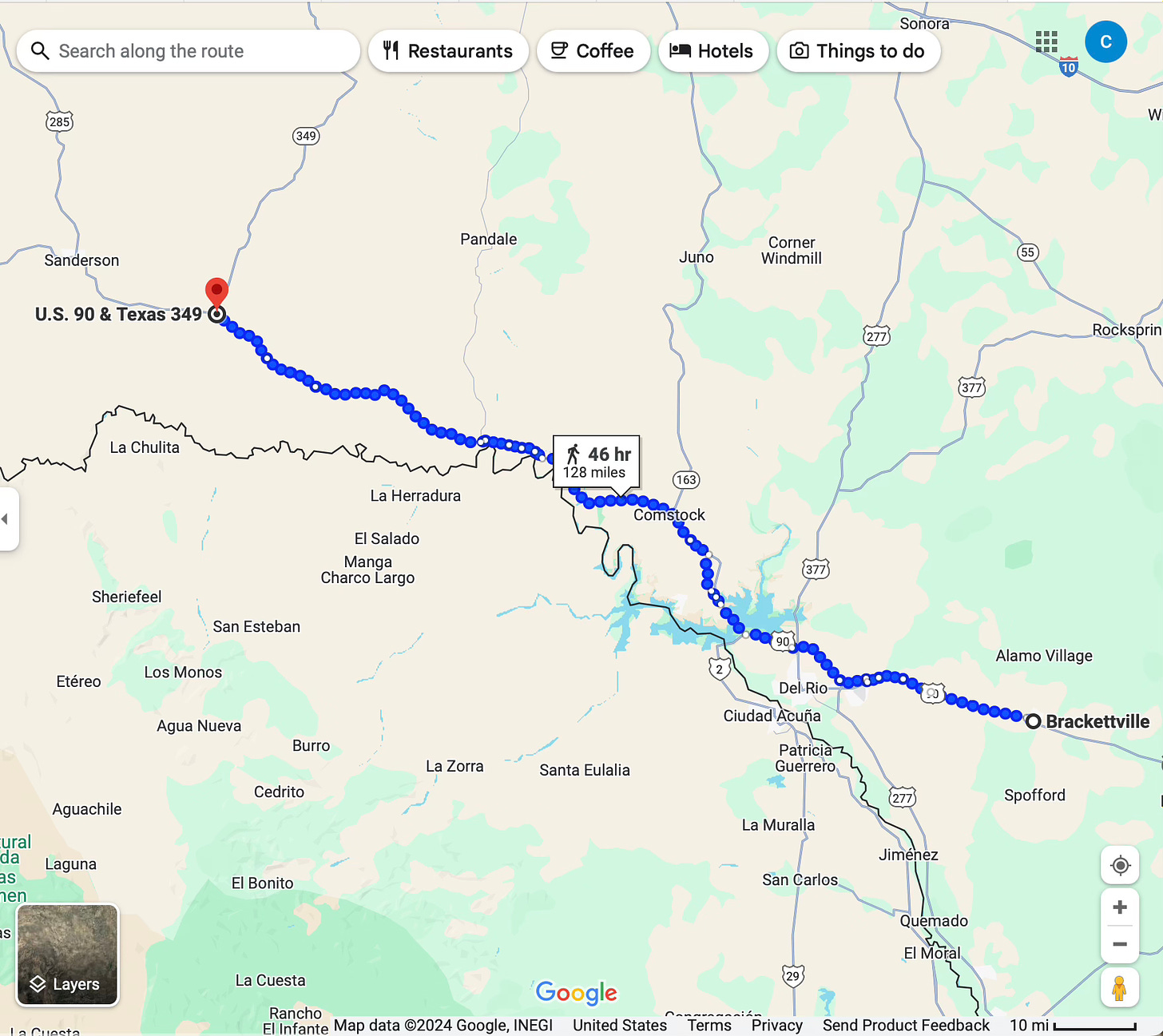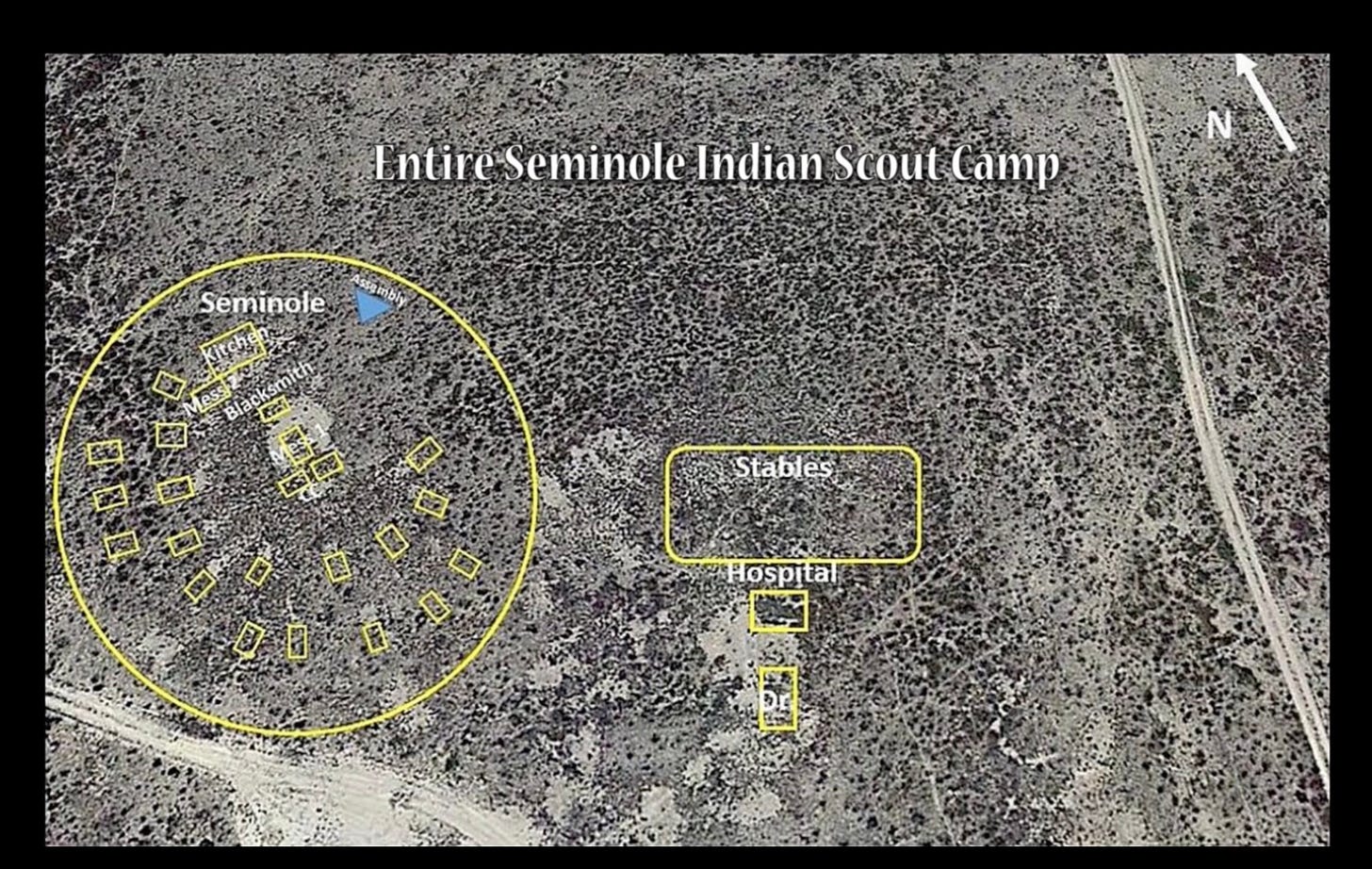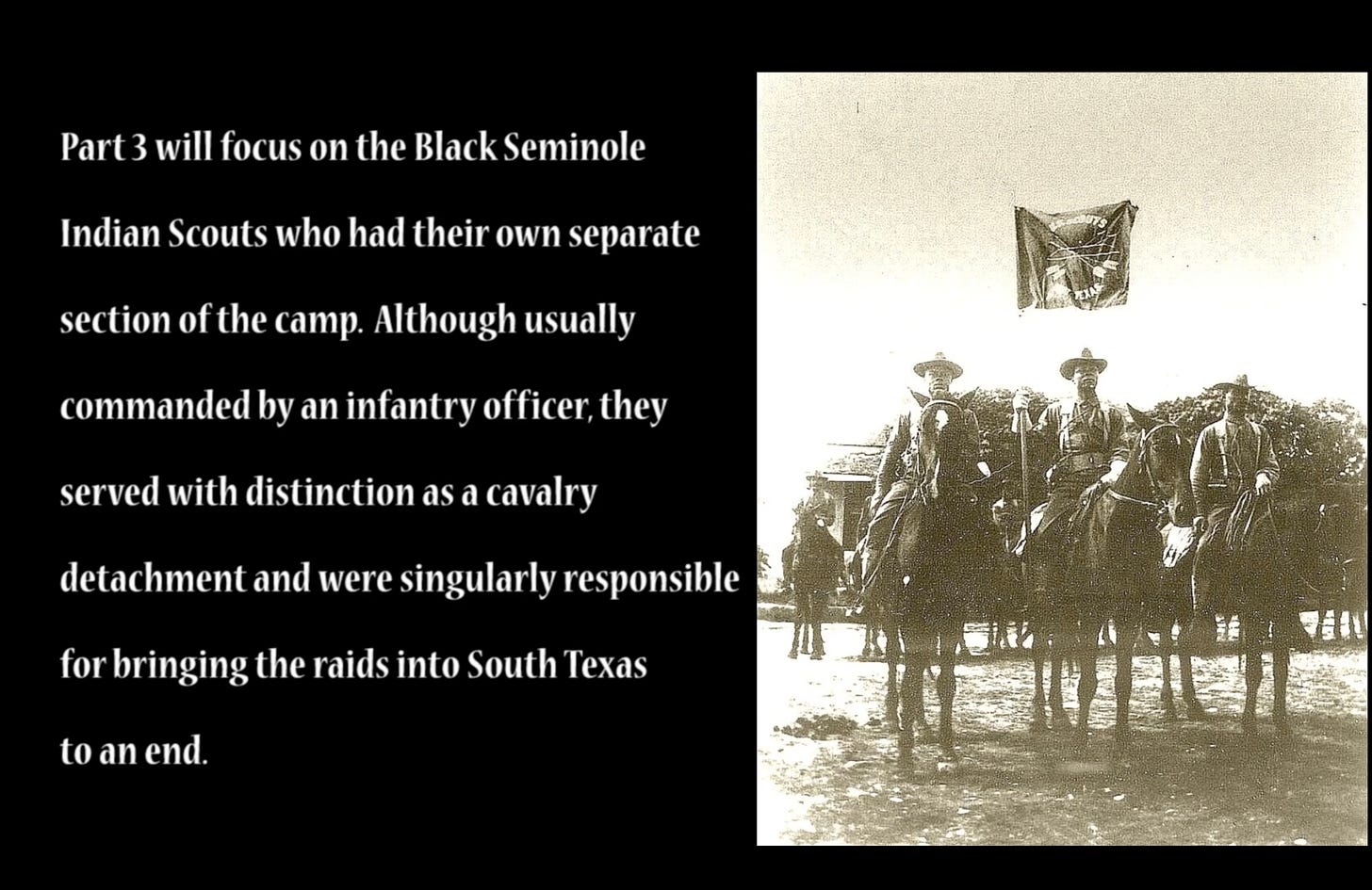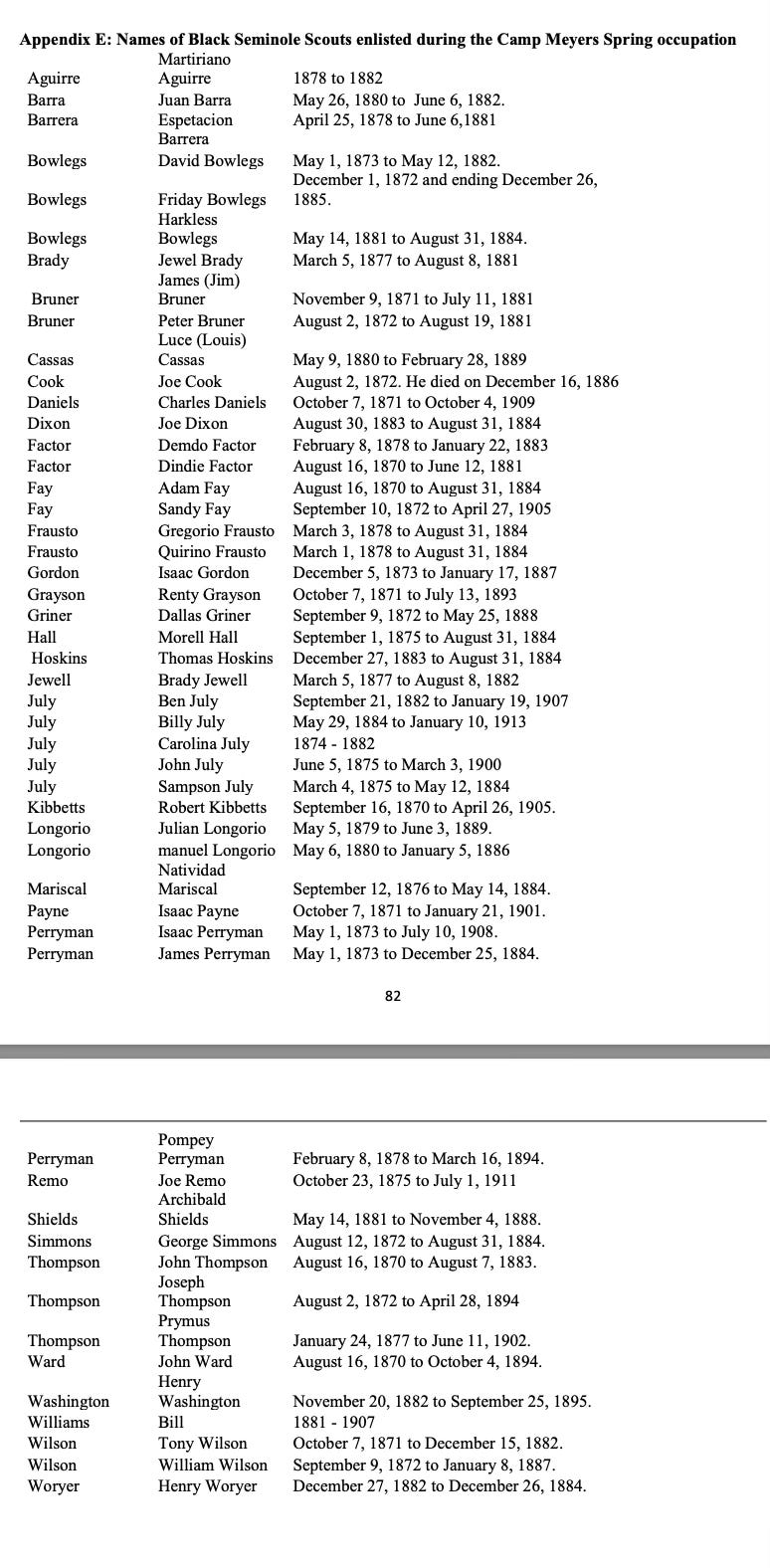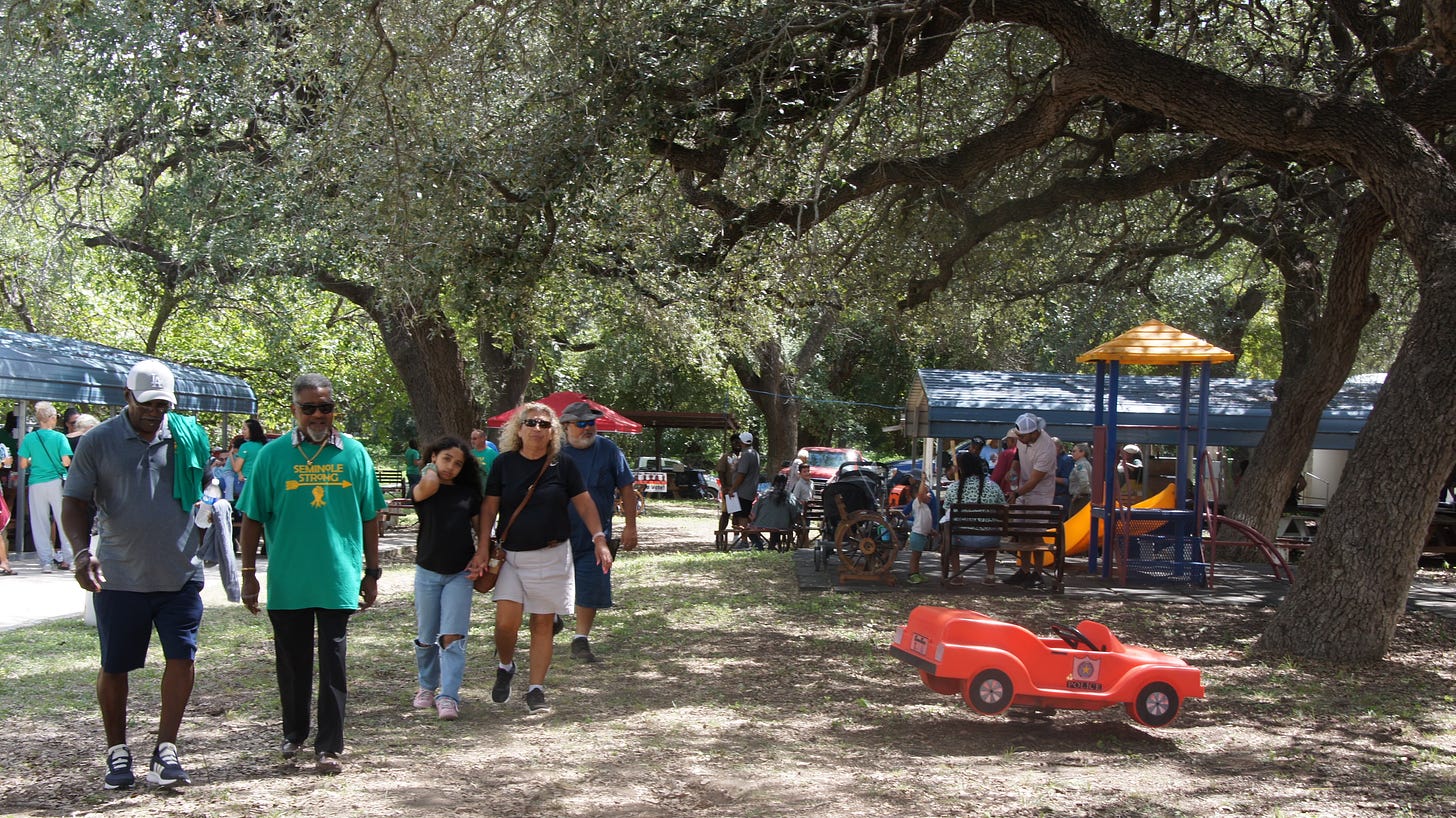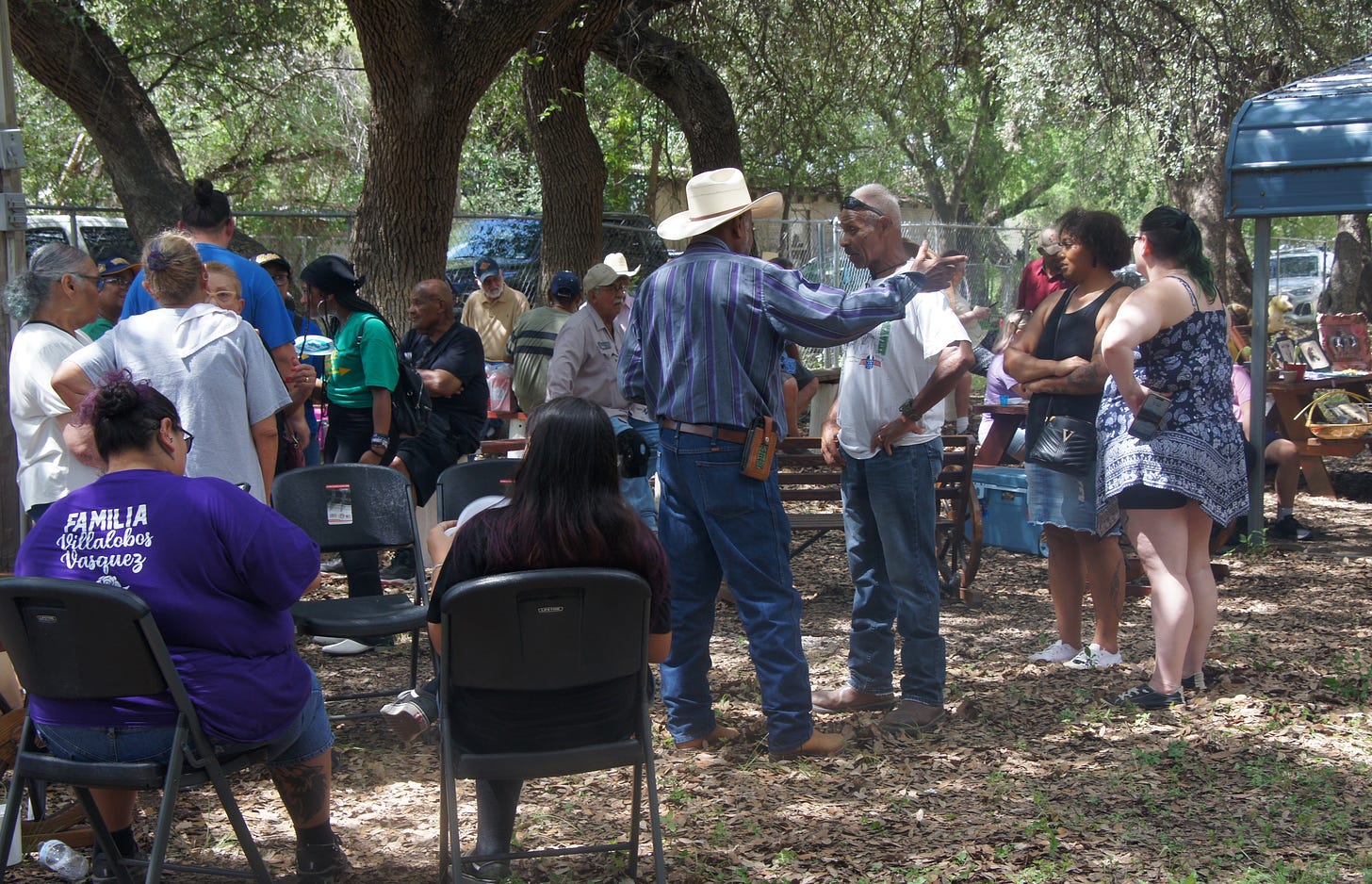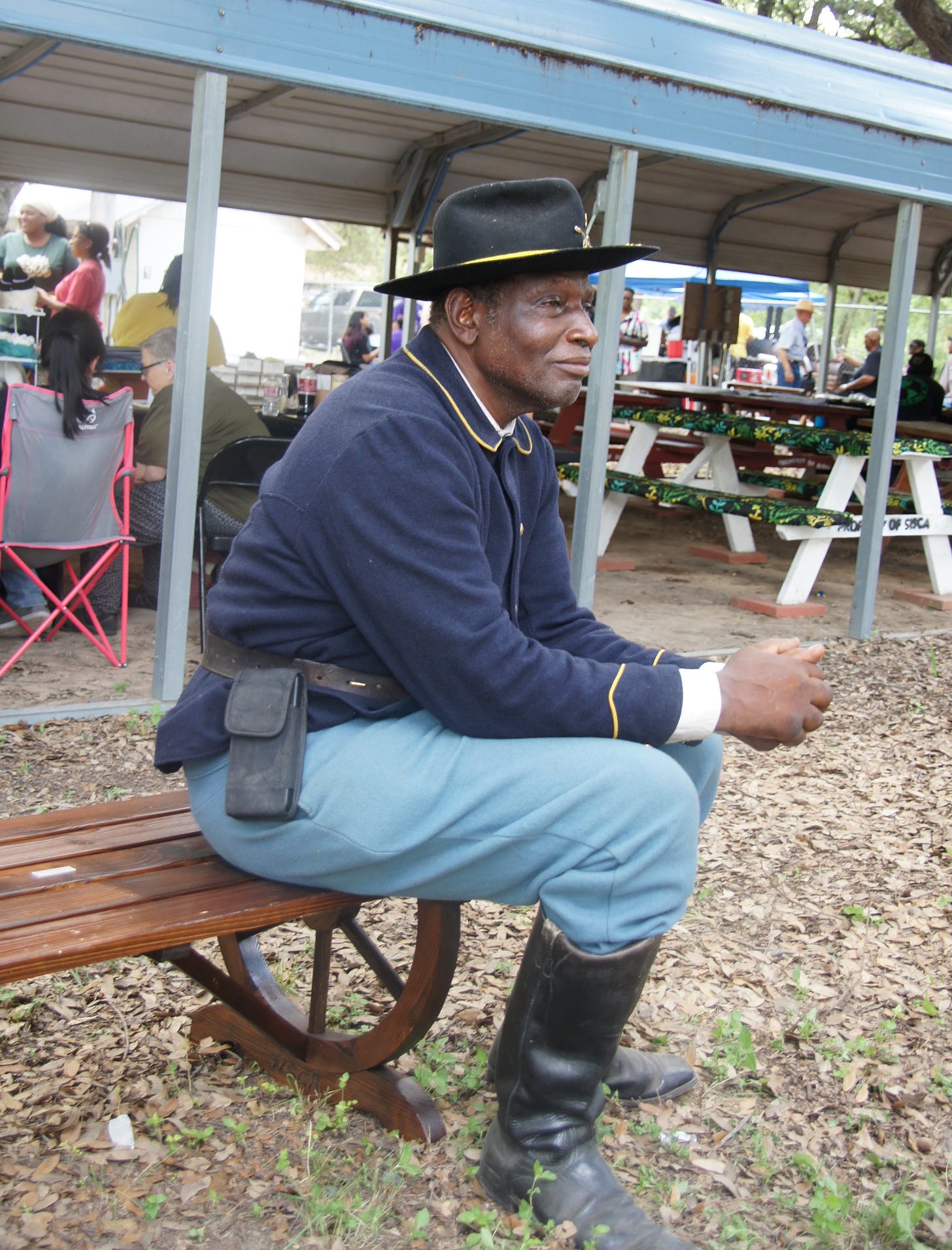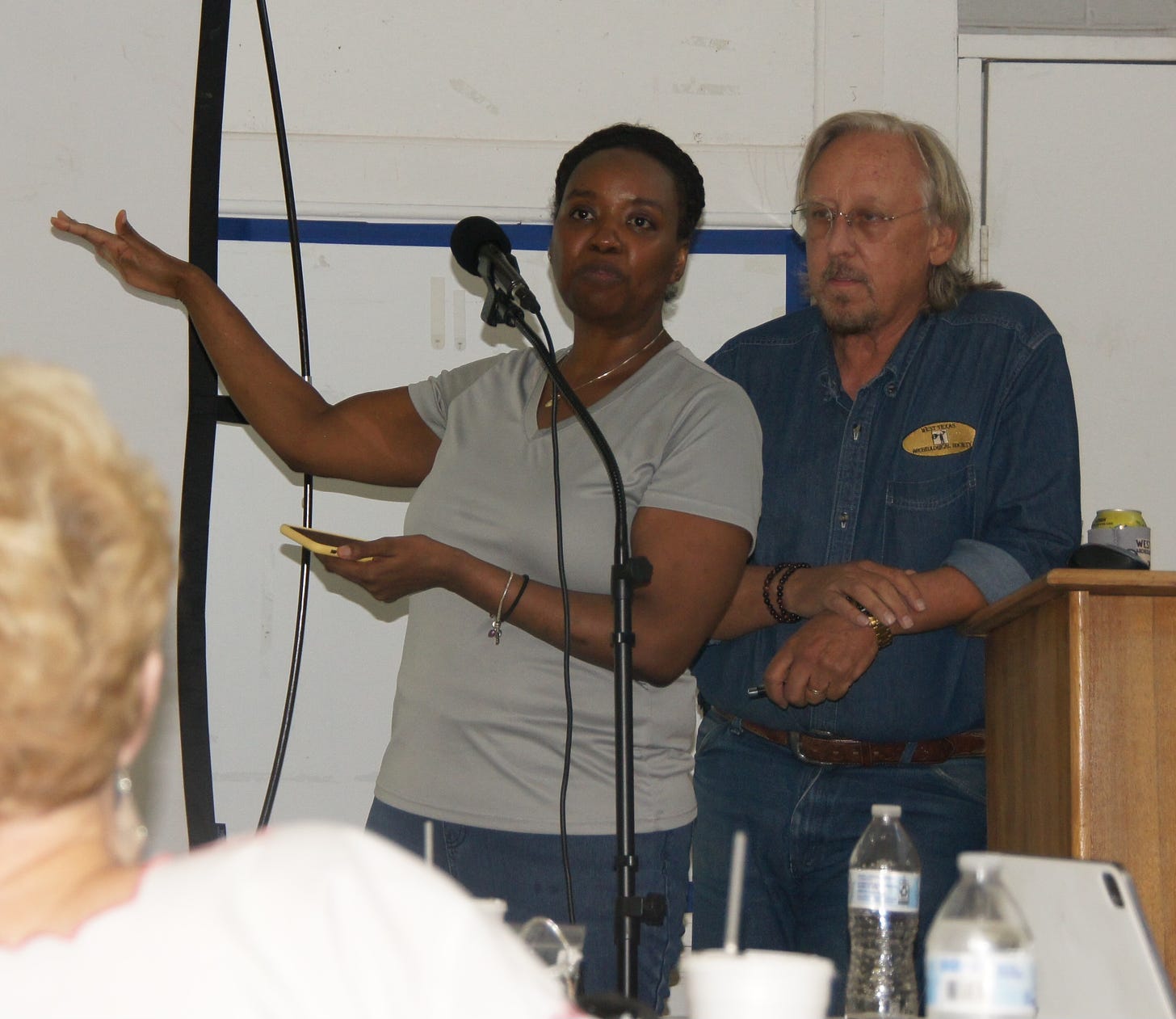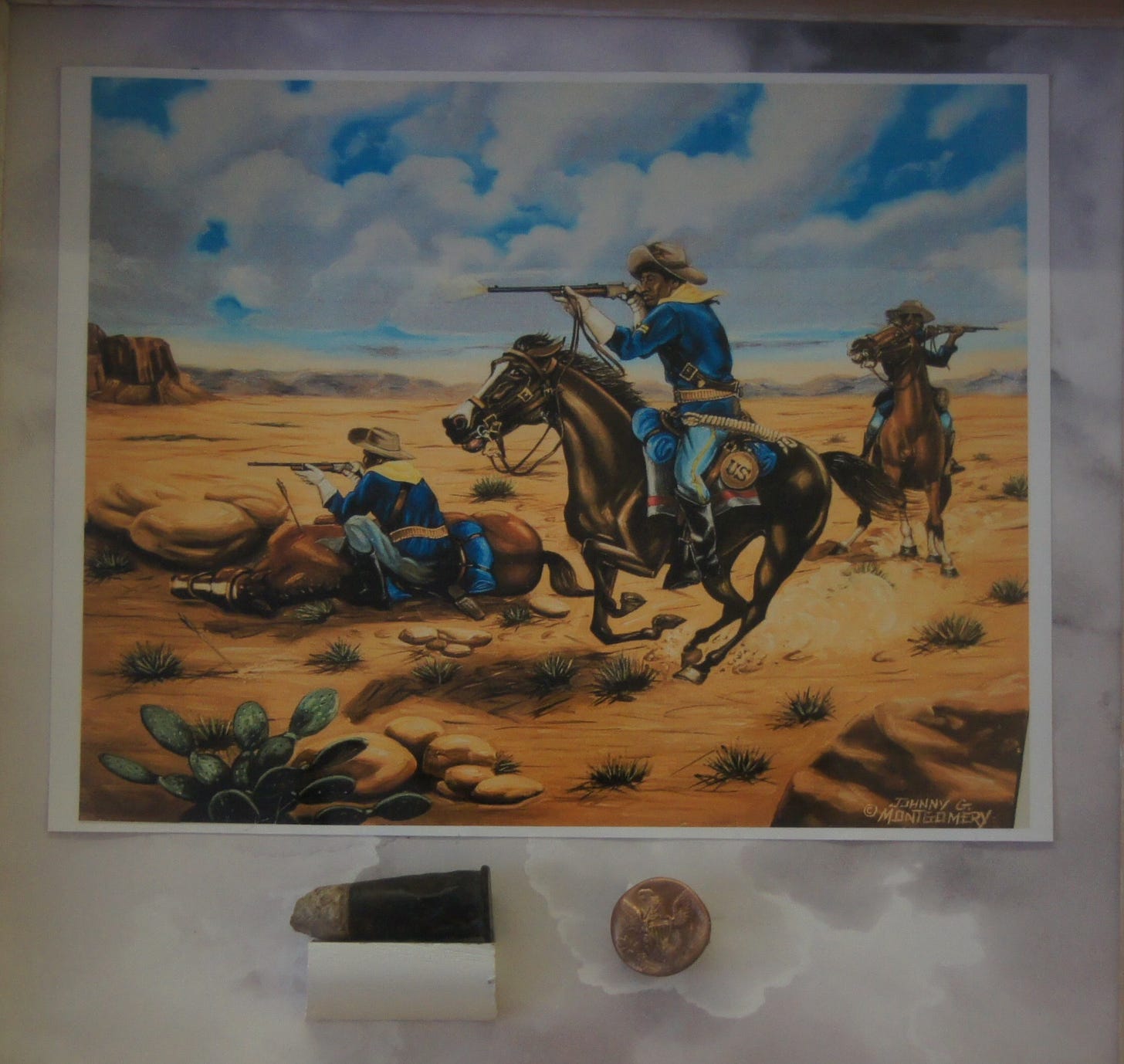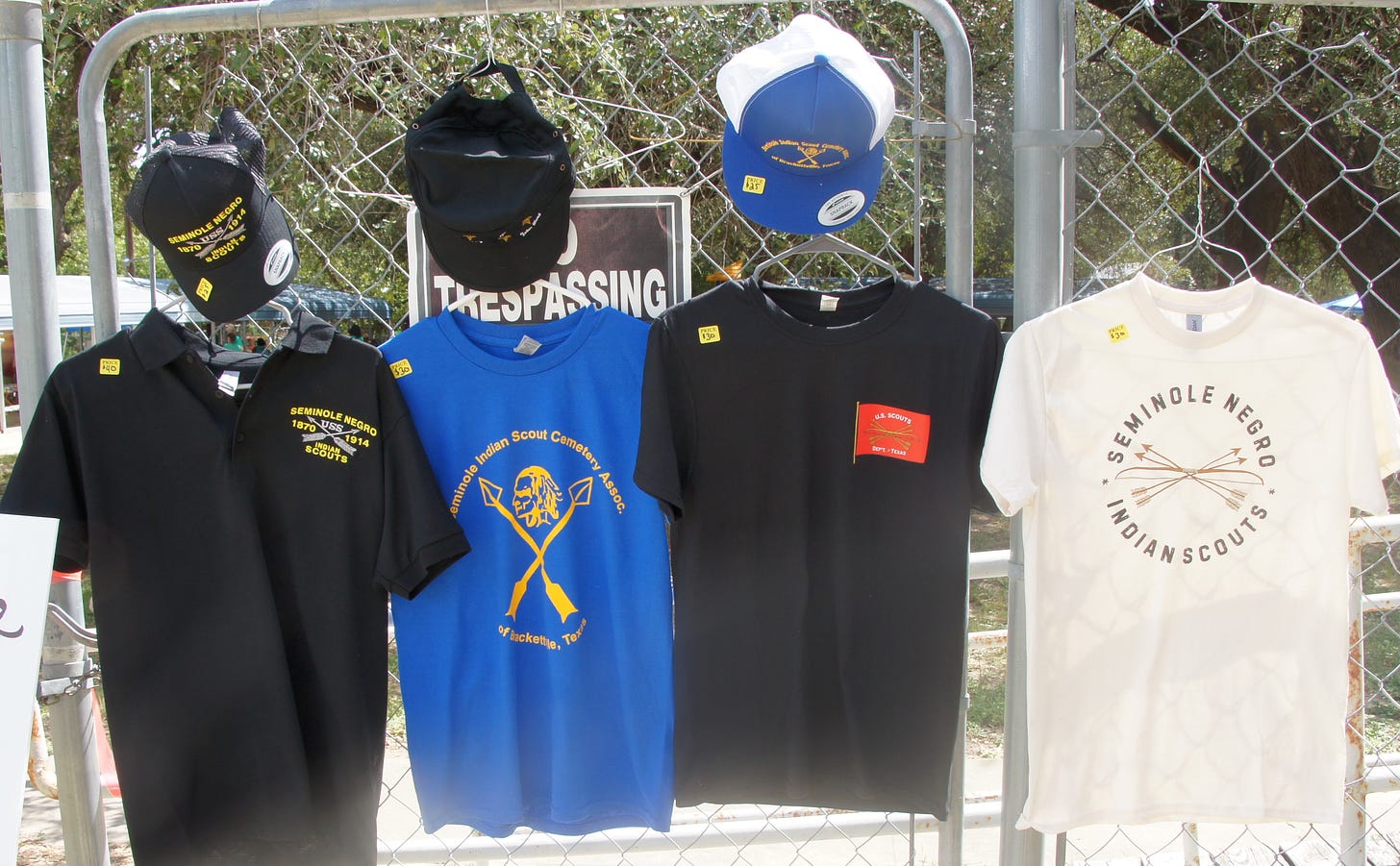Seminole Days 2024, held Sept. 20-22 on the Carver School grounds in Brackettville, included a great lecture on the deployment of Fort Clark’s Black Seminole Indian Scouts to Camp Meyers Spring, located about 125 miles northwest of here in what is now Terrell County, during the Indian Wars in the 1880s.
Tom Ashmore of the West Texas Archeological Society gave the program, ending with a gift to the Seminole Indian Scouts Cemetery Association of two artifacts found at Camp Meyers Spring, a Spencer 56-50 rifle cartridge and an Indian Wars coat button.
Archeologists have tied both items directly to Fort Clark’s Seminole Indian Scouts. Their methods are explained at length in a report on the WTAS website, https://westtexasarcheologicalsociety.website/meyers-spring-history At the bottom of the page is a PDF of the report, or download it here:
Ashmore and C.A. Maedgen started digging at Camp Meyers Spring in 2022 on about a five-acre area that quickly grew to cover nearly 200 acres. Archeologists have unearthed a trove of treasures that are housed in a barn converted by the landowner, Thad Steele, into a museum. To visit the museum and also to view the Native American pictographs on the ranch, see https://www.wittemuseum.org/event/rock-art-tours-meyers-spring/
The camp, a military outpost of Fort Clark, was probably started about 1876 as a forward camp of operations by the Seminole Negro Indian Scout Detachment. A prospector, Burr Duvall, accompanied the scouts on one of their patrols in 1879.
Led by 1st Lt. John Bullis, the camp eventually became an official military sub post, active from 1881 to 1884. The camp covered about 40 acres but with support roads, water catchments and camps, the entire operation covered about 200 acres, archeologists say.
In the mood for a six day walk?
The Seminole Scouts arranged their camp not according to military specs but in a semicircle, with the chief - Bullis - in the center and the Indian Scouts surrounding him. Each tent held two men.
According to one entry in records, Bullis gathered his scouts from their home sites on Las Moras Creek a few miles south of Fort Clark on Jan. 31, 1879 to start out on patrol.
That patrol lasted 80 days, when the scouts chased Apache raiders all the way to Fort Stanton, New Mexico.
Another report shows that 37 Indian Scouts left Fort Clark with Bullis on Aug. 21, 1880 and were located “west of the Pecos River” for five months. They returned to Fort Clark on Jan. 16, 1881. The next deployment to “west of the Pecos” was for about one month in early spring of 1881. Finally, another deployment led by Bullis out of Fort Clark was brief, from May 15 to June 3, 1881.
“Lt. Bullis often commanded the scouts as a fighting cavalry unit,” the WTAS report says. “They distinguished themselves with great success against raiding Indian parties both above and below the border and were credited with over 27 field deployments against hostile raiders, with hundreds of horses and cattle returned to their rightful owners in Texas and devestating consquences to the raiders and camps they encountered. They continued under his command until July 1881.”
Second Lt. Frank B. Jones then carried on deployments starting Aug. 20, 1881.
“This deployment lasted five months and began a series of rotating deployments between the Seminole detachment and regular cavalry units,” the report said.
A screenshot from a video that appears on the West Texas Archeological Society website. See link below.
Three scouts, who are buried at the Seminole Indian Scouts Cemetery on Hwy. 3348 south of Brackettville, earned the Congressional Medal of Honor for rescuing Bullis during a battle with Comanches at the mouth of the Pecos River on April 25, 1875. https://westtexasarcheologicalsociety.website/meyers-spring-history
Those scouts were Sgt. John Ward, Trumpeter Isaac Payne and Pvt. Pompey Factor. A fourth scout who earned a Medal of Honor and who is also buried at the Seminole Cemetery, Pvt. Adam Paine, served Col. Ranald Mackenzie by providing cover during a Kiowa chase on Sept. 26, 1874 near Quitaque Peak on the Texas frontier. https://www.historynet.com/four-brave-black-seminole-indian-scouts-earned-medal-honor-1870s/
Ashmore said he plans to do more digging in October and the West Texas Archeological Society will do a third update on the camp report in 2025.
The society is also working on a report about the Cloud Dancer pictograph found there that the society is sure came from the Lipan Apaches in this area.
Video of dig report on Camp Meyers Spring
Selton Williams, who hails from near Lockhart, represents Company A of the 9th Cavalry Regiment Buffalo Soldiers - in his wool uniform in 90-plus-degree weather.
Windy Goodloe of the Seminole Indian Scouts Cemetery Association introduces Tom Ashmore of the West Texas Archeological Society, who gave a lecture on the massive dig efforts on Camp Meyer Spring, a Fort Clark military outpost during the Indian Wars.
T-shirts and caps are for sale at the Seminole Indian Scouts Cemetery Association Museum, located at 506 Beaumont on the Carver School grounds in Brackettville. Hours are noon to 4 p.m. Saturdays. Admission is $5.
Photos by Carolea Hassard





